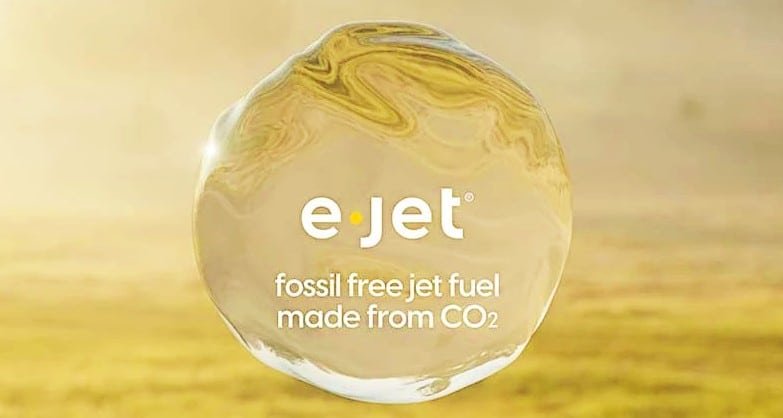Breaking new ground in the aviation industry, the startup Twelve is set to revolutionize sustainable aviation fuel (SAF) production in the U.S. It recently broke ground on a commercial-scale facility in Washington state, which it claims will be the country’s first to create SAF from carbon dioxide.
The groundbreaking event, attended by Washington Gov. Jay Inslee, marks a historical milestone for an aviation industry under pressure to decarbonize.
Twelve began producing jet fuel in a Berkeley, California lab in 2021 using electricity, water, and CO2. The company refers to this product as E-Jet, a potential replacement for fossil-based fuel that could significantly reduce airlines’ carbon emissions.
Now, the California-based startup is scaling up efforts to produce more of this cleaner fuel at its commercial-scale facility in Moses Lake, Washington. If operations begin in 2024, the facility will be the first of its kind to convert CO2 into SAF.
Major corporations such as Alaska Airlines, Microsoft, and Shopify have recently signed deals to buy millions of dollars of SAF from Twelve’s new facility.
Cutting Emissions By 90%
Last year, aviation was responsible for 2% of global GHG emissions and is growing faster than any other transport modes. This emission will continue rising as more people and airplanes fly.
In 2022, major U.S. airlines have burned over 17 billion gallons of jet fuel. Only a very small fraction of this consumption, below 0.1% or almost 16 million gallons was SAF.
So cutting further down the sector’s pollution is crucial in the fight against climate change. But substituting the planet-warming kerosene with SAF poses significant challenges.
Global fuel companies and startups have been finding solutions to make it possible to fully replace fossil-based kerosene. And they are supported by the Biden administration through the Inflation Reduction Act.
The climate law offers tax credits to producers of clean alternative fuels like SAF with $300 million in grants. The goal is to grow the supply of these fuels to 3 billion gallons annually by 2030.
Twelve aims to produce 40,000 gallons of E-Jet per year before scaling up production by as much as 10x within the first 5 years of operation, said the chief officer Ram Ramprasad. The startup also plans to construct much larger facilities.
The company said that SAF can reduce the carbon emissions of airplanes by up to 90% versus fossil-based kerosene. Though using E-Jet still emits carbon, it’s much less than petroleum-based fuels. That’s because it recycles CO2 from the wastes of refineries and mills, or captured directly from the air.
Twelve’s E-Jet From “Industrial Photosynthesis”
Twelve is using a unique method to transform CO2 into juice for jet engines in a process called “industrial photosynthesis”.
The process is pretty much the same as what plants do during photosynthesis. The difference is that Twelve’s electrochemical reactor named Opus performs photosynthesis.
Opus takes water and CO2 and changes them into new chemicals, materials, or fuels using renewable energy. It splits CO2 molecules into carbon monoxide while in a separate electrolyzer, water molecules break down into hydrogen and oxygen. The result of these processes is called “syngas.”
The team is using a multistep reaction process called the Fischer-Tropsch to transform the gas into alternative jet fuel.
The company sources “waste” CO2 from industrial facilities. Its modular reactor can be installed in any industrial system, with a “plug-n-play” design.
According to Twelve, they can cut up to 10% of global emissions through Opus. And that’s possible by transforming supply chains from running on fossil fuels to running on waste or captured CO2.
Twelve Carbon Transformation Technology
Other startups are also using carbon to make synthetic jet fuel. For instance, LanzaJet, a spinoff of LanzaTech, is recycling municipal solid wastes, agricultural biomass and residues to make SAF.
The company, which turned public this year, is constructing what it claims is the first “ethanol-based alcohol-to-jet” SAF production. The facility, which is due to finish this year, will make 10 million gallons of sustainable aviation fuel each year.
Air Company, another startup based in New York, is also working in the same space. Its innovative carbon conversion technology combines CO2 and hydrogen to make oily liquids suitable for making SAF.
The company also makes carbon-negative alcohols and consumer products out of thin air. With its pioneer carbon technology, Air Company made the world’s first alcoholic beverage directly from CO2, Air Vodka.
The Key Challenge to Scaling SAF
Right now, almost all of the country’s SAF supply is from used cooking oil and animal fats, and scarce feedstocks. This is why Twelve’s carbon transformation technology needs to scale up rapidly to supply the much-needed SAF.
In 2022, SAF production tripled to about 300 million liters or 240,000 tonnes, according to the International Air Transport Association. If renewable energy production hits 69 billion liters by 2028 as projected, the forecast to 100 billion liters (80 million tonnes) by 2030 is possible. If only 30% of that production is achieved, the industry can still have 30 billion liters (24 million tonnes) of SAF by the same year.
To produce E-Jet at its commercial plant, Twelve will first source CO2 from an ethanol refinery in neighboring Oregon. Then it will later get more CO2 supply from pulp and paper mills in Washington.
The biggest challenge the company has in ramping up its SAF plants is the availability of power. They’re aiming to build their next facility in the American Corn Belt where ethanol facilities and wind farms abound.
Finding sites where they can source CO2 and access renewable power is critical to scaling up sustainable aviation fuel production.
Still, by leading the charge in developing cleaner and greener solutions through its innovative industrial photosynthesis, Twelve’s method is showing immense potential in cutting aviation’s carbon emissions. With the growing demand for cleaner fuels, plus government support, flying will be more sustainable in the future.

